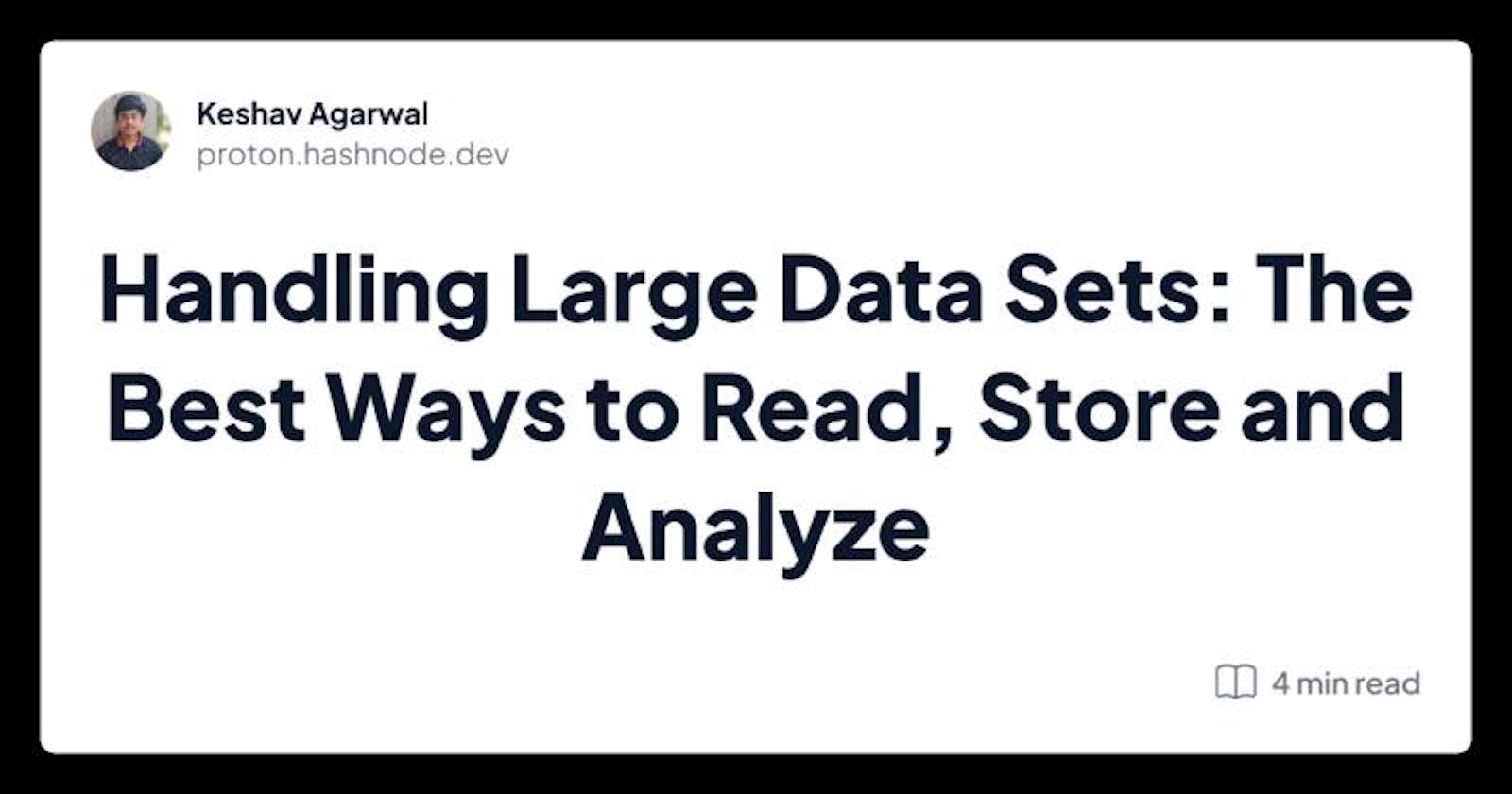Handling Large Data Sets: The Best Ways to Read, Store and Analyze
Managing Big Data with Dask and Parquet
Introduction:
Big data is a term used to describe the large volume of data – both structured and unstructured – that inundates a business on a day-to-day basis. But it’s not the amount of data that’s important. It’s what organizations do with the data that matters. In this blog, we will discuss the best ways to read, store, and analyze large data sets.
Reading Large Data Sets:
When working with large data sets, it’s important to use a parallel processing approach. One such approach is using Dask, a flexible parallel computing library for analytics in Python. Dask allows you to perform operations on large data sets using a parallel processing approach without loading all data in memory. This way you can work with a large data set without running out of memory.
Storing Large Data Sets:
When storing large data sets, it’s important to use a storage format that is designed to handle large data sets efficiently. Two such formats are Parquet and HDF5. These are columnar storage formats that allow you to store and retrieve data in a compressed and optimized format. This can significantly reduce the storage space required and improve the performance of data operations.
Analyzing Large Data Sets:
When analyzing large data sets, it’s important to use a parallel processing approach. Dask provides dask.dataframe which allows you to work with the data in a similar way as you would with a pandas DataFrame. This way you can perform operations on large data sets using a parallel processing approach without loading all data in memory.
Example - 1
here is an example of how you can use Dask and Parquet to read, store, and analyze a large data set:
import dask.dataframe as dd
from dask import delayed
from dask.distributed import Client
# Start a Dask client
client = Client()
# Read the data from disk
df = dd.read_parquet('data.parquet')
# Perform operations on the DataFrame
result = df.groupby('field').mean()
# Compute the result
result = result.compute()
# Iterate over the result
for index, row in result.iterrows():
print(index, row['mean_column'])
This code snippet demonstrates how to read a large data set from a Parquet file on disk using Dask. The read_parquet function from dask.dataframe package is used to read the data from the file. Then, we perform some operations on the dataframe using groupby and mean method. The compute() method is used to compute the result in a distributed manner. Finally, we iterate over the result to print the mean of each group.
Example-2
Here's an example of using Dask to work with a large MongoDB data set in Python:
import dask.dataframe as dd
from dask.distributed import Client
from dask_mongodb import MongoDB
# Connect to MongoDB
uri = 'mongodb://localhost:27017/'
db_name = 'mydatabase'
collection_name = 'mycollection'
# Start a Dask client
client = Client()
# Create a Dask DataFrame from the MongoDB collection
df = dd.from_pandas(MongoDB(uri, db_name, collection_name), npartitions=10)
# Perform operations on the DataFrame
result = df.groupby('field').mean()
# Compute the result
result = result.compute()
# Iterate over the result
for index, row in result.iterrows():
print(index, row['mean_column'])
# Close the Dask client
client.close()
It is important to note that you need to have the dependencies installed, as mentioned in the requirements file above, in order to use the above code snippet.
Here is an example of a requirements.txt file that includes the dependencies for the approach I described earlier:
dask
dask-core
dask-dataframe
dask-distributed
fastparquet
pyarrow
You can install these dependencies by running the following command:
pip install -r requirements.txt
This will install the latest versions of dask, dask-core, dask-dataframe, dask-distributed, fastparquet and pyarrow packages.
Please note that you may need to install additional dependencies depending on your system and specific use case.
Also, as mentioned before you can use dask.dataframe.read_parquet to read the data from parquet file and perform operations on it.
fastparquet package is a python wrapper around the C++ parquet implementation known as Apache Arrow. Its main feature is the ability to read and write parquet files in a distributed manner using dask.
pyarrow package is a python library for working with Apache Arrow. It provides a set of tools for using Arrow data within Python, including data I/O operations, memory management, and interoperability with pandas and other data libraries.
Conclusion:
Big data can be overwhelming, but with the right tools, you can easily read, store, and analyze large data sets. Dask is a great tool for working with large data sets in a parallel processing approach. And columnar storage formats such as Parquet and HDF5 are great for storing large data sets efficiently. With these tools, you’ll be able to handle large data sets with ease.

